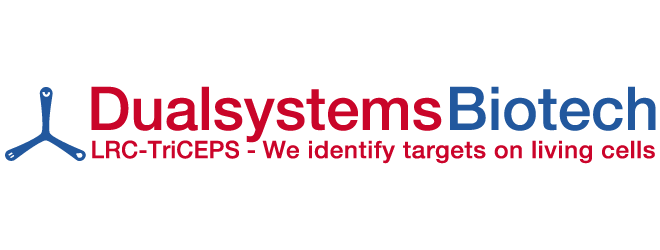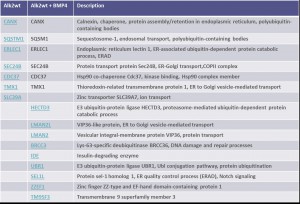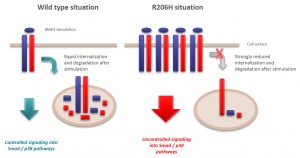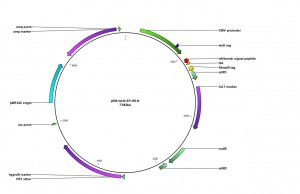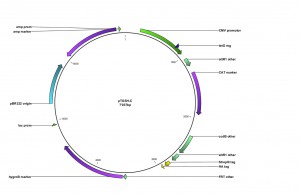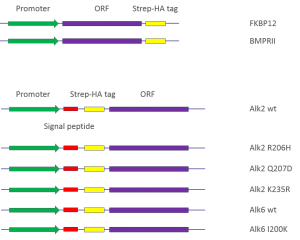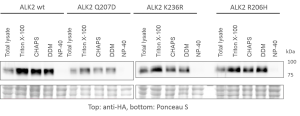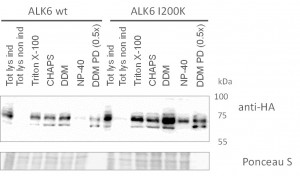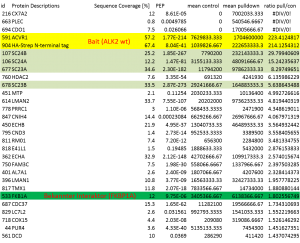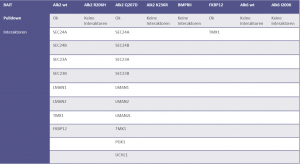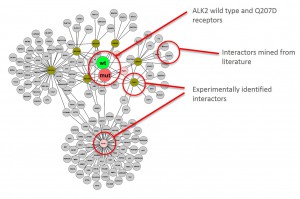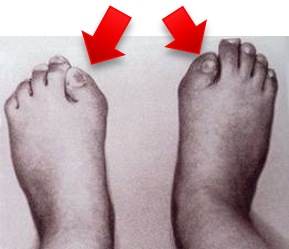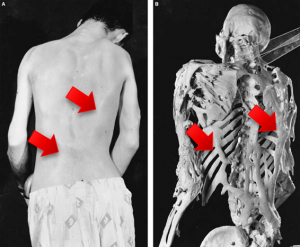Discussion
The ALK2 interaction network in U2OS cells
Summary of ALK2 interactors identified in U2OS cells
Discussion: theintracellular ALK2 interaction network in U2OS cells
- Apart from typical signaling components, the ALK2 interaction network shows a range of regulatory proteins involved in receptor sorting and turnover
- These include classical chaperones, components of the ubiquitination pathway and the ERAD pathway
- The presence of these interactors, together with the increase in regulatory interactions after BMP4 stimulations, suggest a tight regulation of ALK2 in U2OS cells
- The increase in regulatory proteins which bind to ALK2 after BMP4 stimulation also suggests that ALK2 is rapidly internalized and degraded after activation
- Contrary to wild type ALK2, the FOP (Fibrodysplasia ossificans progressiva) mutant variant R206H apparently does not interact with components of the ubiquitination and ERAD pathways
- This suggests that ALK2 R206H may be mis-regulated and may not be removed from the cell surface after activation with BMP4
A modelfor ALK2 R206H hyperactivation in FOP
- The commonly accepted model for FOP postulates a hyperactivation of ALK2 R206H, which leads to differentiation of inflamed tissues into bone
- Our observation that the R206H mutant fails to interact with many components of the degradation machinery points to a possible explanation for receptor hyperactivity
- Failure to remove the mutated ALK2 receptor from the surface after BMP4 stimulation may lead to accumulation of active receptor on the cell surface and therefore continued signaling into the downstream network
- As the ALK2 R206H mutant is capable of correctly inducing downstream signaling in Hek293 cells via both the Smad and p38 pathways, accumulated active ALK2 R206H may „hyperactivate“ these pathways, pushing the cells towards differentiation into bone cells
